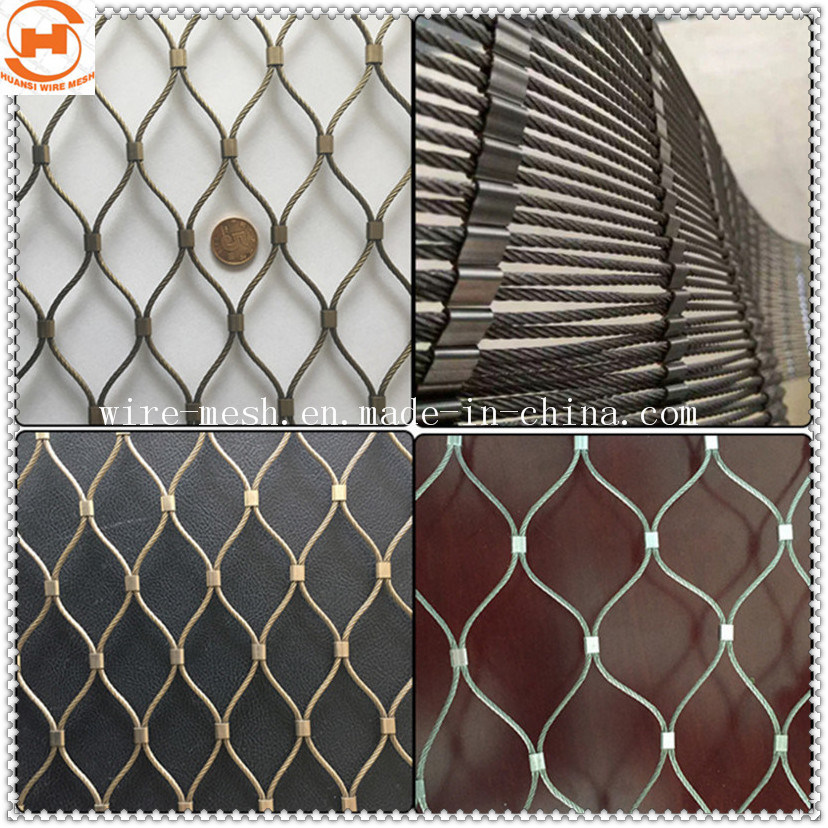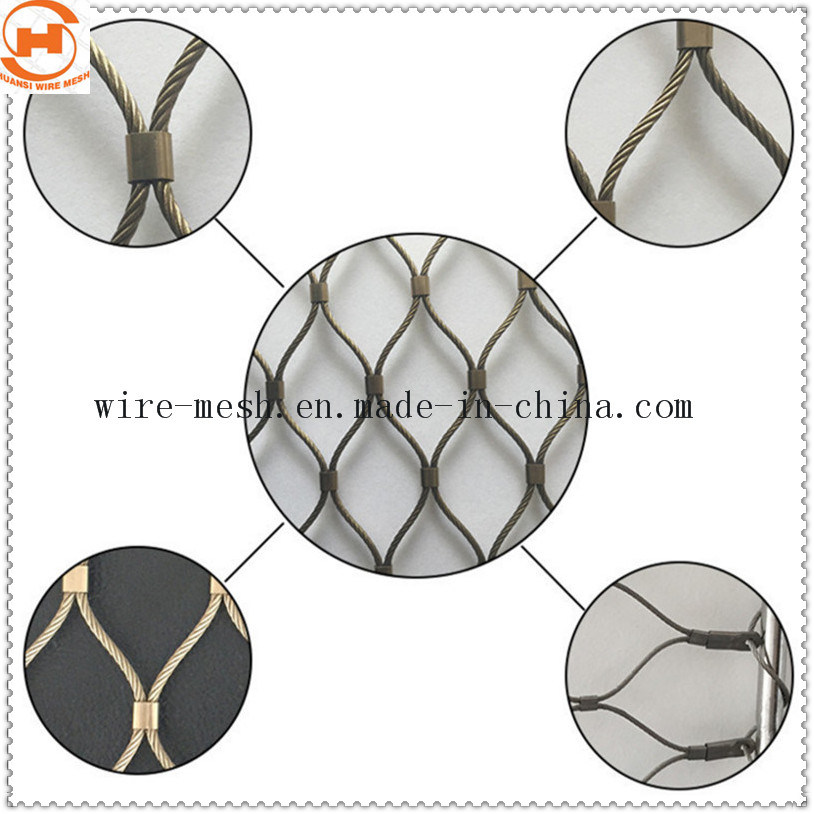Stainless Steel Rope Mesh
stainless steel rope mesh by South Korea, Japan's imports of high-quality stainless steel wire, the pressing buckle weaving twist plait and, because of its beautiful, generous, luxurious appearance characteristics in practical application except for animal fencing, still more for the architectural decoration, furniture, landscaping, exhibitions, and other environment. I plant the production of stainless steel rope mesh raw materials used in all by the Republic of Korea, Japan imported, material for SUS304, 304L, 316 316L, structure is 7 x 7, 7 x 19.
 Product features and advantages
1, Light weight, high strength, never rust, good flexibility, fatigue resistance, impact resistance, breaking strength, the overall structure is strong and durable, the service life of more than 30 years;
2, Close to nature, green and efficiently protect birds of a feather and animal skin, effectively prevent rodents and other animals bite, give animals a safe, comfortable living environment.
3, The perspective of good, luxurious appearance, novel style, can be integrated with the surrounding environment, played a very good decorative and protective effect.
Specification :
| MODEL | ROPE DIA . (MM) |
MESH SIZE | ROPE STRUCTURE |
BREAKINGFORCE Â Â Â Â (KN) Â |
| G32120 | 3.2 | 120X208 | 7 X19 | Â Â 7.38 |
| G32100 | 3.2 | 100X173 | 7X 19 | Â Â 7.38 |
| G3290 | 3.2 | 90X156 | 7 X 19 | Â Â 7.38 |
| G24100 | 2.4 | 100X173 | 7 X 7 | Â Â 4.18 |
| G2490 | 2.4 | 90X156 | 7 X 7 | Â Â 4.18 |
| G2480 | 2.4 | 80X139 | 7 X 7 | Â Â 4.18 |
| G2470 | 2.4 | 70X121 | 7 X 7 | Â Â 3.17 |
| G20100 | 2.0 | 100X173 | 7 X 7 | Â Â 3.17 |
| G2090 | 2.0 | 90X156 | 7 X 7 | Â Â 3.17 |
| G2080 | 2.0 | 80X139 | 7 X 7 | Â Â 3.17 |
| G2070 | 2.0 | 70X121 | 7 X 7 | Â Â 2.17 |
| G1680 | 1.6 | 80X139 | 7 X 7 | Â Â 2.17 |
| G1670 | 1.6 | 70X121 | 7 X 7 | Â Â 2.17 |
| G1660 | 1.6 | 60X104 | 7 X 7 | Â Â 2.17 |
| G1651 | 1.6 | 51X87 | 7 X 7 | Â Â 1.22 |
| G1280 | 1.2 | 80X139 | 7 X 7 | Â Â 1.22 |
| G1270 | 1.2 | 70X121 | 7 X 7 | Â Â 1.22 |
| G1260 | 1.2 | 60X104 | 7 X 7 | Â Â 1.22 |
| G1250 | 1.2 | 50X87 | 7 X 7 | Â Â 1.22 |



Â
Plate rolling is a process of continuous three-point bending of sheet metal using a plate rolling machine. The equipment puts the sheet material between the upper and lower work rolls when rolling. The upper roller is raised and lowered vertically, and the two lower rollers rotate and move horizontally relative to the axis of the upper roller. When the upper roll descends, the plate is plastically deformed and bent between the upper and lower work rolls. The continuous rotation of the bottom roller drives the steel plate to advance and retreat through the friction between the plate and the roller to complete the coiling.
1. Pre-bending. When the plate is rolled, there is a length at both ends of the plate that does not bend because it does not touch the upper roller. It is called the remaining straight edge. In the process, the minimum force arm at which the plate starts to bend is called the theoretical remaining straight edge. The bending form (symmetrical bending, asymmetrical bending) is related.
2. Centering. The purpose of centering is to make the generatrix of the workpiece parallel to the roller axis to prevent skew.
3. Roll round. Rolling is the main process of product forming, which is divided into two types: one-time feed and multiple feeds. Multiple feeds are commonly used for rolling thick plates. The number of feeds depends on the technological constraints (such as the maximum allowable deformation during cold rolling) and equipment constraints (such as non-slip conditions and power conditions). When the rebound of the cold coil is significant, a certain amount of overcoiling must be added.
4. Straightening round. The purpose of rounding is to make the curvature of the entire circle as uniform as possible to ensure product quality. The general rounding process is divided into three steps:
(1) Load: According to experience or calculation, adjust the work roll to the position of the required maximum correction curvature.
(2) Rounding: Roll the roller 1 to 2 turns under the corrected curvature to make the entire curling rate uniform.
(3) Unloading: gradually unload the load, so that the workpiece is rolled several times under the gradually reduced correction load.
Rolling Machine,Three-Roller Bending Machine,Four-Roller Bending Machine,Roll Forming Machine
Rugao Yaou Import & Export Trade Co., Ltd , https://www.ntyaous.com